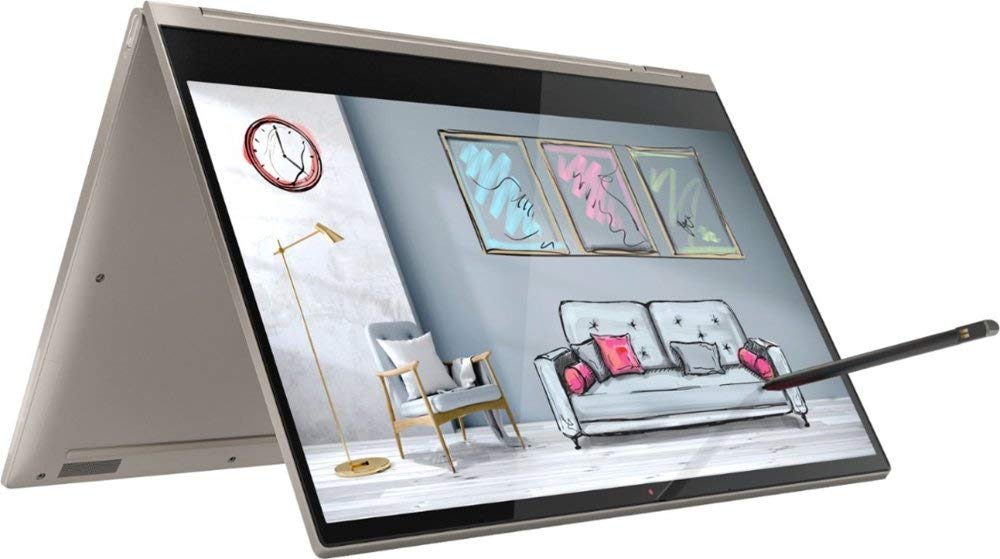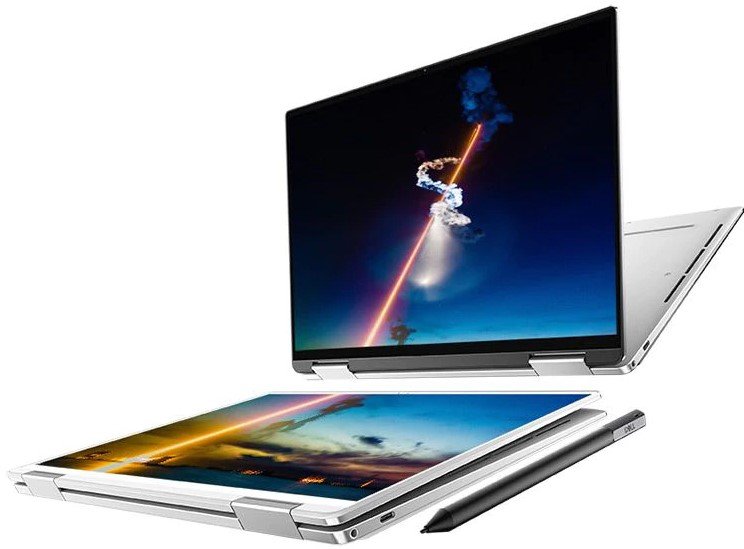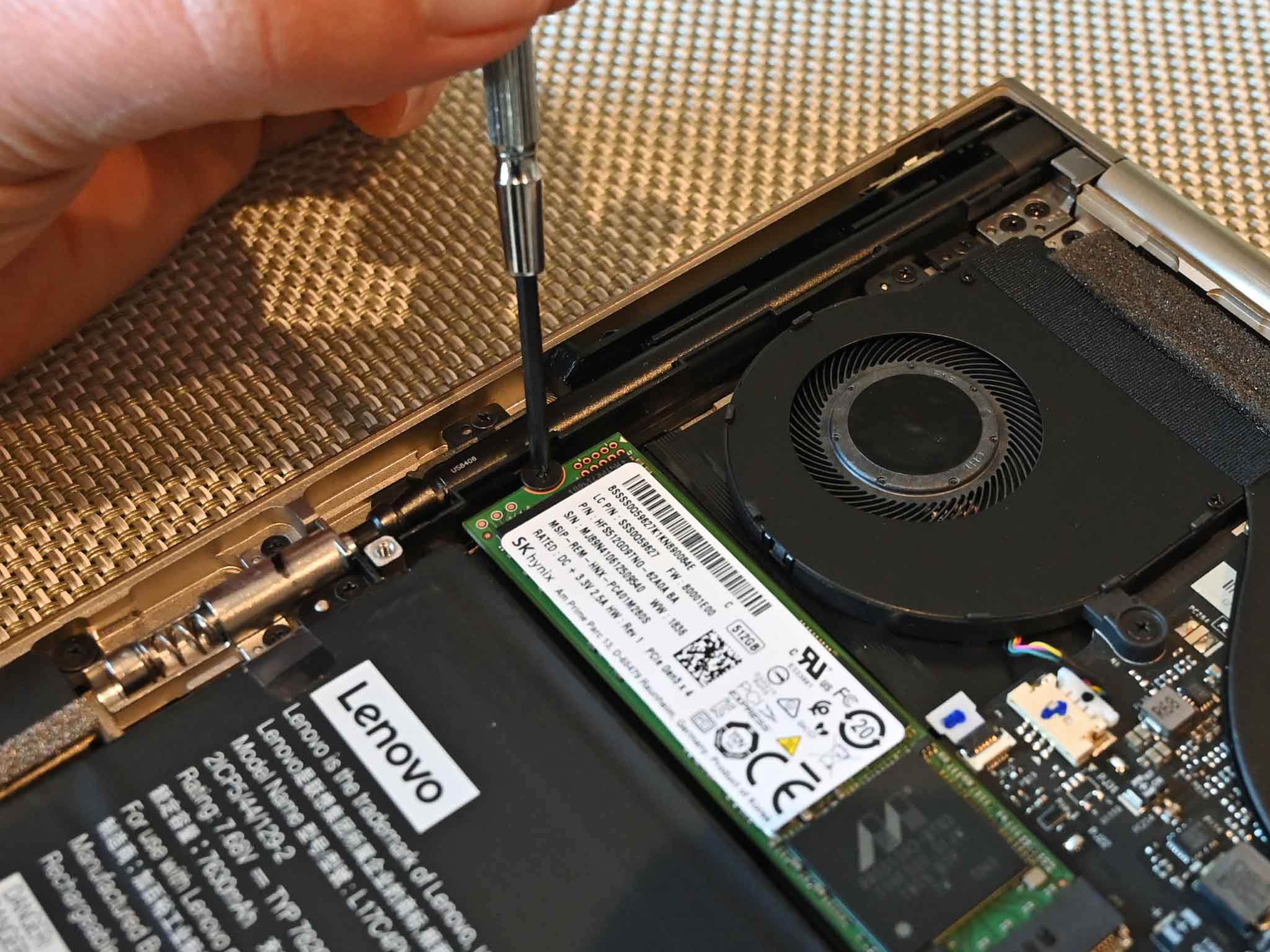Dell XPS 13 2-in-1 vs. Lenovo Yoga C930: Which is a better buy?


Redesigned XPS convertible
Dell's refreshed XPS 13 2-in-1 has seen some significant changes, including a 16:10 touch display with inking (4K or FHD), 10th Gen Intel Core processors (CPU) and new thermals, a comfortable keyboard, and chassis available in alpine white or carbon black. RAM and solid-state drive (SSD) are not upgradeable, and some might miss the USB-A port.
For
- Using 10th Gen Intel processors
- New 16:10 aspect ratio
- 4K touch display with HDR available
- Thin and light premium build
- Lower starting price
Against
- RAM and SSD not upgradeable
- No USB-A port

Flagship C-series Yoga
Lenovo's Yoga C930 is one of the best convertibles of the year thanks to a beautiful aluminum design, soundbar hinge with excellent audio, built-in active pen, and stellar battery life. However, it lacks a microSD card reader, it's using older Intel CPUs, and the display options won't match up to those available in the XPS 13 2-in-1.
For
- SSD can be upgraded
- Hinge doubles as a soundbar
- Active pen built into the laptop
- Holds onto a USB-A port
- Larger 60Wh battery
Against
- Cannot upgrade RAM
- No MicroSD card reader
- Using 8th Gen Intel processors
- Displays could be brighter
These two laptops are on the (very) shortlist for the best convertible so far, though the Yoga C930 is beginning to show its age compared to the brand new XPS 13 2-in-1. If you're interested in the latest Intel hardware and love a 16:10 aspect ratio, Dell's laptop should be your first choice. If you prefer a laptop with some unusual design elements, like a soundbar hinge, the C930 will still make a great addition. Let's take a close look at the tech specs before diving into some of the more significant similarities and differences between these two laptops.
Dell XPS 13 2-in-1 (7390) vs. Lenovo Yoga C930 tech specs
| Header Cell - Column 0 | Dell XPS 13 2-in-1 (7390) | Lenovo Yoga C930 |
|---|---|---|
| Processor | 10th GenIntel Core i3-1005G1Intel Core i5-1035G1Intel Core i7-1065G7 | 8th GenIntel Core i5-8250UIntel Core i7-8550U |
| RAM | 4GB, 8GB, 16GB, 32GBLPDDR4x-3733MHz | 8GB, 12GB, 16GBDDR4-2400MHz |
| Storage | 256GB, 512GB, 1TBPCIe SSD | 256GB, 512GB, 1TB, 2TBPCIe SSD |
| Display size | 13.4 inches | 13.9 inches |
| Display resolution | 1920 x 12003840 x 2400 | 1920 x 10803840 x 2160 |
| Aspect ratio | 16:10 | 16:9 |
| Graphics | Intel UHD GraphicsIntel Iris Plus Graphics | Intel UHD 620 Graphics |
| Ports | Two Thunderbolt 3microSD card reader3.5mm audio | Two Thunderbolt 3USB-A 3.13.5mm audio |
| Biometrics | Fingerprint reader | Fingerprint reader |
| Battery | 51Wh | 60Wh |
| Dimensions | 11.69 x 8.15 x 0.28 - 0.51 inches( 297mm x 207mm x 7 - 13mm) | 12.7 x 8.9 x 0.57 inches(322mm x 227mm x 14.5mm) |
| Weight | From 2.9 pounds (1.32kg) | From 3 pounds (1.36kg) |
| Colors | Alpine whiteBlack carbon fiber | MicaIron Grey |
Design and features
Both of these laptops are gorgeous. And both laptops offer heightened mobility and versatility thanks to each's slim convertible design, though some differences might sway you one way or the other. If you like the look of a unibody aluminum laptop, the Yoga C930, available in mica or iron grey colors, will satisfy. If you like something a bit fancier, the XPS 13 2-in-1's alpine white woven fiber or black carbon fiber composite options are probably more your style. Both laptops weigh virtually the same, though the XPS 13 2-in-1 has a tapered shape that makes it thinner than the C930.
The thin XPS body includes two Thunderbolt 3 ports, a microSD card reader, and a 3.5mm audio jack, while the C930 lacks the microSD card reader but adds a USB-A 3.1 port. It also has the same two Thunderbolt 3 ports and 3.5mm audio jack. You'll have to decide whether a USB port or MicroSD card reader is more important to your usage scenario.
The XPS 13 2-in-1 has a more traditional dual-hinge setup for its rotating display, while the C930 has gone with a single wide hinge that has robust speakers built-in. In notebook or tablet mode it provides loud, full audio and looks superb doing it. On the rear of the C930's body, next to the watchband hinge, is a silo for the included active pen.
Both laptops employ fingerprint readers for some extra security. The XPS has its reader built into the power button, while the Yoga's reader sits in the right palm rest for not quite as clean of a look. You get a webcam above each display, but only the C930 has a webcam shutter you can use to cut off the view if you're worried about spying.
Keyboards on both laptops — the XPS 13 2-in-1 has the same second-gen MagLev keyboard as found in the new XPS 15 2-in-1 — are comfortable despite the thin chassis. And both have sizeable touchpads that make it easy to work the full gamut of Windows 10 gestures into your routine.
Display and inking
One of the most significant changes to the XPS 13 2-in-1 is the move from 16:9 aspect ratio to 16:10. It's a boxier display with more surface area, and it's available with either 1920 x 1200 resolution or higher 3840 x 2400 resolution. The latter is HDR400 certified with 500 nits brightness, while the former can likewise hit 500 nits brightness for working outdoors or in direct sunlight.
Get the Windows Central Newsletter
All the latest news, reviews, and guides for Windows and Xbox diehards.
Lenovo's laptop has similar FHD and 4K display options for its 16:9 panel, though they max out at 300 nits brightness. They're less-than-ideal for working in brightly sunlit rooms, but they're still colorful and have excellent contrast. The C930's included active pen is more of a pencil-style addition, providing 4,096 levels of pressure sensitivity. It stays charged while in its silo, ready to go whenever you are. The XPS is likewise compatible with Dell's Premium Active Pen for a natural inking experience, though you will need to carry it around separately.
Overall, those who want the best display possible are going to want to opt for the XPS 13 2-in-1. The 16:10 aspect ratio, 500 nits brightness, and HDR400 certification for its 4K option edge out what the Yoga has to offer despite being impressive in its own right.
Performance and price

The XPS 13 2-in-1 brings Intel 10th Gen Core i3-1005G1, Core i5-1035G1, and Core i7-1065G7 CPUs to the table, which should edge out performance compared to the 8th Gen Intel options in the Yoga C930. If you're looking for a laptop that can multitask, both will do, but the XPS 13 will have an edge. Lenovo's option can be had with an SSD up to 2TB and can be upgraded or swapped out after purchase, whereas the XPS 13 2-in-1 tops out at 1TB and cannot be upgraded.
Neither laptop has an option for a dedicated graphics card (GPU). But the XPS 13 2-in-1 does feature integrated Iris Plus Graphics in the Core i7 models for a bit of extra power if you want to enjoy some light gaming. The Yoga C930 has the more standard Intel UHD Graphics 620 that doesn't offer the same performance.
We will have to test the XPS 13 2-in-1 in-house to see how long its 51Wh battery lasts with the new Intel CPUs, but on paper, it's smaller than the 60Wh option in the Yoga C930. In our testing, the latter battery got well over nine hours of life from a charge when going about regular tasks.
From Lenovo's website, you can find Core i7 Yoga C930 models starting at about $1,660, perfect for anyone who wants a lot of performance and a 4K touch display. There are also a bunch of options available at Amazon with lesser hardware and a lower price, starting at about $1,200.
Dell's XPS 13 2-in-1 starts at a far cheaper $980 price, but that's with a Core i3 CPU, 4GB of RAM, 256GB SSD, and FHD+ display. For a configuration comparable to the starting C930 entry at Lenovo, with Core i7 CPU, UHD+ display, 16GB RAM, and 1TB SSD, you're looking at a price well above $2,000, ultimately making the XPS 13 2-in-1 more expensive as you scale up hardware.
The Dell XPS 13 2-in-1 is the right choice for most people
Thanks to a competitive price and some of the latest hardware available from Intel, it makes sense for most people to opt for the XPS 13 2-in-1. It's a beautiful device with stunning display options and a robust performance. Though, if you like to upgrade hardware, want the best audio possible, or want a USB-A port, the Yoga C930 is still a contender.

A beautiful convertible with 10th Gen Intel hardware
The XPS 13 2-in-1 brings 10th Gen Intel Core CPUs, a new 16:10 aspect ratio for its touch displays in FHD+ or UHD+ resolution, and a slimmer, lighter chassis that is quite stunning. High-end models are ultimately going to cost more, but if you want the best, this is it.
The Yoga C930 brings better audio, upgradeable hardware
Lenovo's Yoga C930 is an older option that we love using. It's a great pick if you want stellar audio and don't want to lose the USB-A port. Its display doesn't quite compare to the XPS 13 2-in-1, though. You won't get the same performance, but it's not going to cost as much as Dell's laptop with similar hardware.

Soundbar hinge and aluminum unibody design
The displays aren't as impressive, and the overall design isn't quite as sleek as the XPS 13 2-in-1. But the Yoga C930 brings upgradeable SSD, remarkable audio, reliable performance and battery life, and a USB-A port for your older accessories.

Cale Hunt brings to Windows Central more than eight years of experience writing about laptops, PCs, accessories, games, and beyond. If it runs Windows or in some way complements the hardware, there’s a good chance he knows about it, has written about it, or is already busy testing it.
